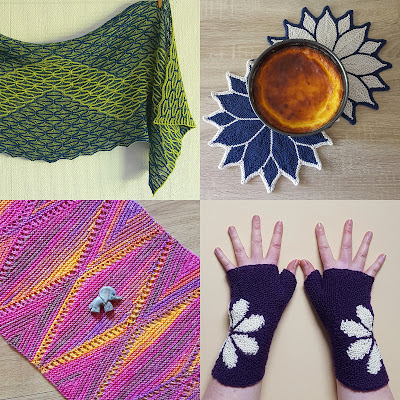This summer, I started to sew a few t-shirts for myself (see e.g. this Instagram post). I am far from being a confident sewer - not very neat or exact. Even though you might get away with a few inaccuracies in Jersey, I decided I would use some of the leftover fabric to practice sewing exactly.
The finished piece looks from above a bit like a paper fortune-teller (the childrens' game) or to be a bit more technical like an origami Blintz base.
If you want to do something similar yourself, here's how to do it:
1. Cut out four pieces of this pattern from leftover fabric. The outer (dotted) line is the cutting line - it already has a seam allowance of 1 cm.
2. Mark the sewing line (along the grey line in the pattern).
3. Decide how to place the pieces. In the picture the parts are numbered for reference in the next steps.
4. Pin pieces 1 and 2 right sides together and sew along the highlighted (black dotted) line on the right hand side.
5. Now pin part 3 to part 2 (also right sides together) and again sew along the highlighted (black dotted) line. Make sure to not sew part 1.
9. Turn the piece right sides out and fill with stuffing through the opening (I always use the cuttings from my overlock machine for stuffing). Make sure that the stuffing gets into the corners, too.
10. Close the opening by hand sewing. And the pincushion is finished.
Unfortunately, my piece is not as neat as I would have liked - the bit in the middle (where all parts meet) . The reverse side is even worse :) I guess I need some more practice - i.e. I need to think of another scrappy project that requires a certain precision :)






























